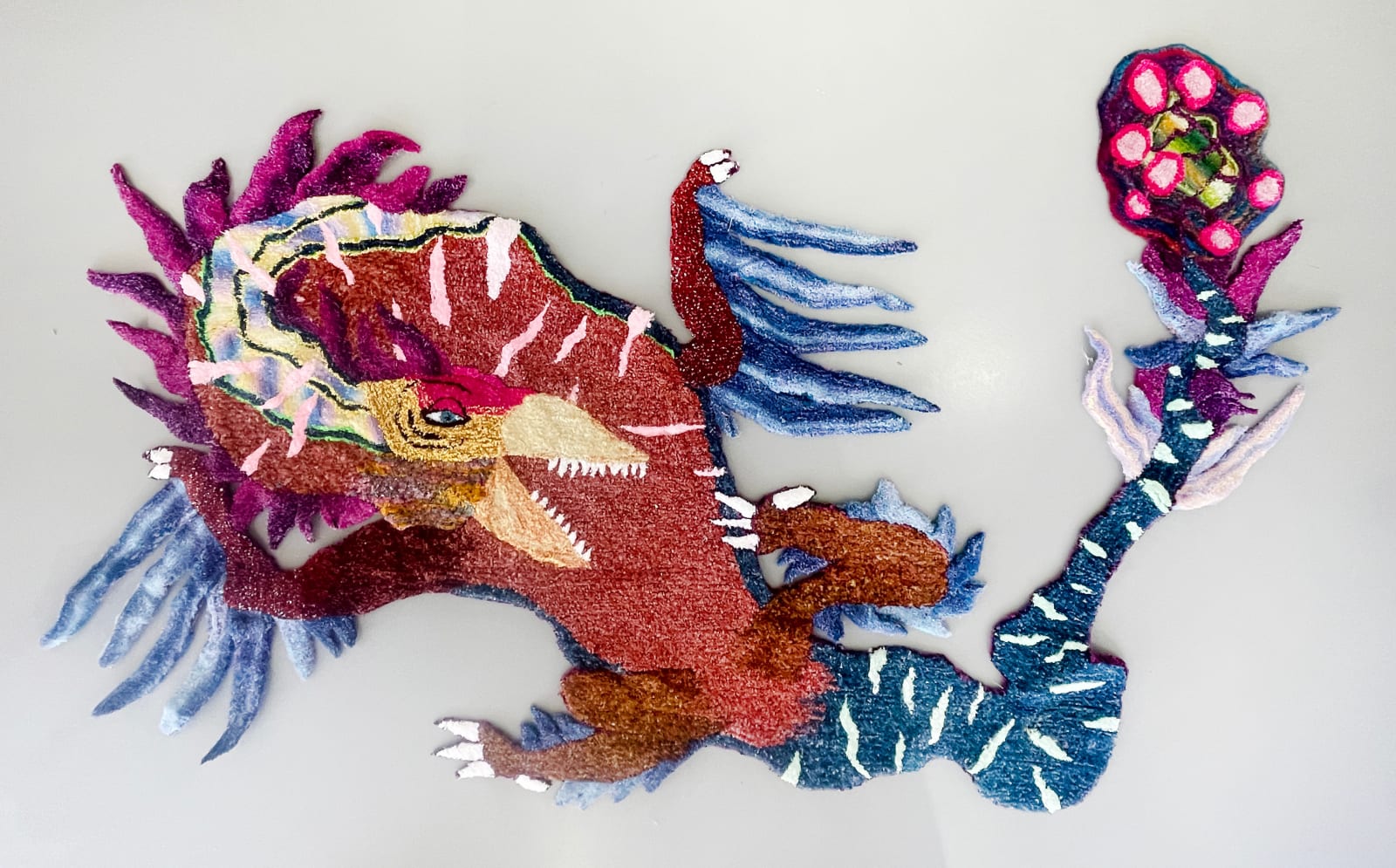Johan Ibraham Adam Swedish, b. 1989
Dinosauri, 2023
Tufted rug
180 x 250 cm
kr 55,000.00
Further images
In many of Adam's works, the traditional image of dinosaurs is critiqued using both tufting and painting. Through tufting, Adam has depicted a dinosaur adorned with a colourful feathered coat...
In many of Adam's works, the traditional image of dinosaurs is critiqued using both tufting and painting. Through tufting, Adam has depicted a dinosaur adorned with a colourful feathered coat and the ability to sing like a bird, contrasting with today’s image of enormous, naked, terrifying reptiles. As modern bird species are directly descended from dinosaurs, there is now research showing that today’s birds inherited their feathers from dinosaurs, unlike the previous theory that feathers first evolved in birds. What happens when we allow imagination to lead in recreating the past? The beautiful, magical creatures that emerge, in contrast to the monotonous image of the terrifying reptile, are worth reflecting on. How does this reshape our perception of the past, and how does it influence our view of nature today? Does the added sense of magic inspire a greater reverence for the natural world?
I flera av Adams verk kritiseras bilden av dinosaurier med både tufting och måleri som medel. Med tuftingen har Adam gestaltat en dinosaurie klädd i färgstark fjäderdräkt och förmåga till fågelsång i kontrast mot dagens bild av enorma nakna skräcködlor. Då de moderna fågelarterna utvecklats i rakt nedstigande led från dinosaurierna finns det idag forskning som visar att vår tids fåglar ärvt sin fjäderdräkt från dinosaurier tillskillnad från den tidigare teorin att fjädrar utvecklades först hos fåglarna. Vad händern är vi låter fantasi ta ledet i skapandet av det förflutna? De vackra magiska varelserna som föds i kontrast till den monotona skräcködlan är värd att reflektera över. Vad gör detta med vår syn på det förflutna och hur påverkar det vår syn på naturen idag?Skapar den tillförda magin en större vördnad för naturen?
I flera av Adams verk kritiseras bilden av dinosaurier med både tufting och måleri som medel. Med tuftingen har Adam gestaltat en dinosaurie klädd i färgstark fjäderdräkt och förmåga till fågelsång i kontrast mot dagens bild av enorma nakna skräcködlor. Då de moderna fågelarterna utvecklats i rakt nedstigande led från dinosaurierna finns det idag forskning som visar att vår tids fåglar ärvt sin fjäderdräkt från dinosaurier tillskillnad från den tidigare teorin att fjädrar utvecklades först hos fåglarna. Vad händern är vi låter fantasi ta ledet i skapandet av det förflutna? De vackra magiska varelserna som föds i kontrast till den monotona skräcködlan är värd att reflektera över. Vad gör detta med vår syn på det förflutna och hur påverkar det vår syn på naturen idag?Skapar den tillförda magin en större vördnad för naturen?
7
of
7













